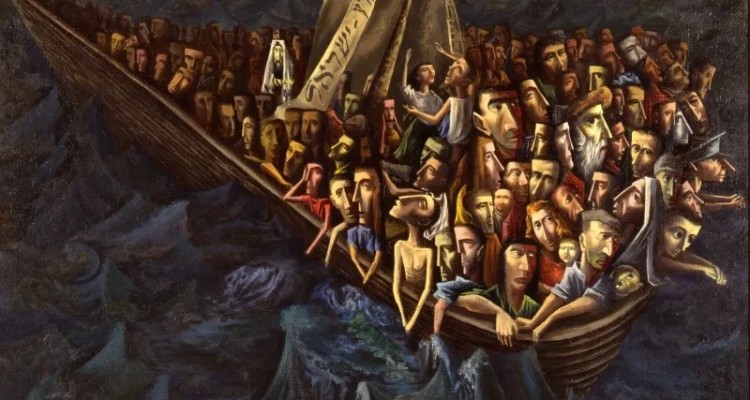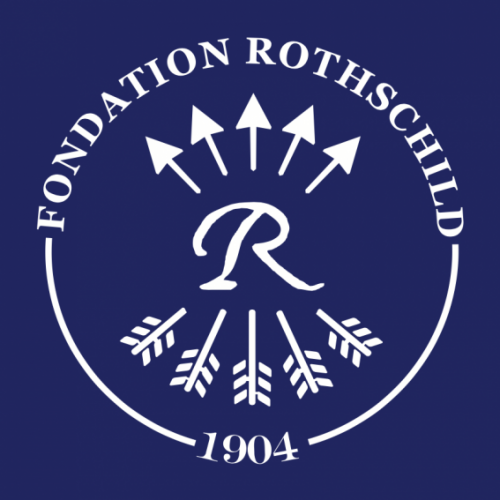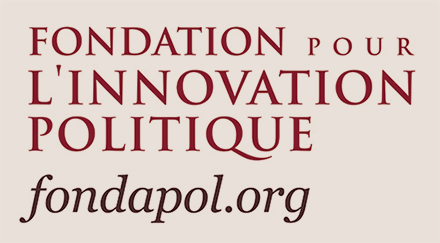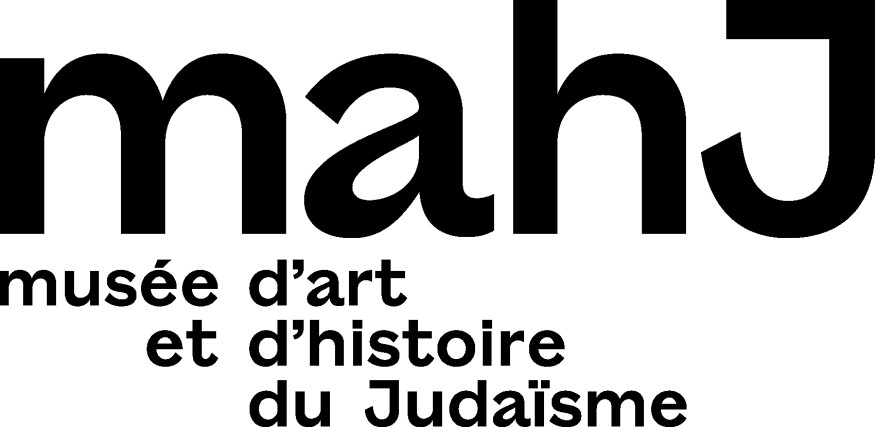Simon Dubnow (1860-1941) was a historian-sociologist – died in the Riga ghetto – who made the history of the Jews a history of the mutations of the diaspora, spread out and organised around various centers. The Jewish nation is polycentric and, at the beginning of the twentieth century, it was necessary for him to grasp the new map of these centers in the modern era, to understand the tensions and balances, in a context of persecution, but also the obvious vitality of Judaism in the East. But, after the Holocaust and the establishment of the State of Israel, how can we understand the scattered community of modern Jews today? Bruno Karsenti, a century later, asks this question in conversation with Dubnow.

One great polarity dominates Jewish life in our time, the one between Israel and the Diaspora. Some feel the tension between the two poles keenly, others less so. Still others deny it altogether, which pushes them either toward exclusive Zionism (all Jews must join Israel) or anti-Zionism (Israel counts for nothing in being Jewish). These two extremes, however, are rather the exception. One might even suspect them of denial, insofar as it is very unlikely that anyone could completely extricate himself from the polarity, consider himself completely released from it. At one time or another, according to subjective experiences, hazards and events, it reappears in the way each person apprehends his or her identity, that is to say, affirms or thinks of himself or herself as Jewish.
Polarity or polycentrism?
But there is nothing simple about this polarity. The error, in this respect, is to suppose that there would be a symmetry between the two poles, causing a tug-of-war between two anchorages of the same order, in competition with each other. This is precisely not the case. The diaspora defines the essential feature of the people since the exile, it is that qualifies it in the long term. And the young modern state called the State of Israel, which arrived late and is certainly very singular, does not aim to erase the Diaspora, although certain versions of Zionism may initially have cherished the dream of “gathering all the exiles”. Put differently: Zionism is not a messianism, it does not represent the restoration of the kingdom, the star that is meant to absorb all its satellites. It does not abolish the diaspora but brings out in it an option that the previous condition of exile did not provide. It is a constantly open option, which singles out for the Jews this country among all the others, and which produces the general feeling of living in a polarity, wherever one may be.
It is thus dispersion that remains the great background of Jewish life, even today. Israel is not the center of the centers, despite the new existential property it confers on Jews everywhere in the world, and despite its specific nature. In short, underneath the apparent polarity, which is experienced differently according to conditions and places, there remains the Jewish polycentrism, in which Israel itself is embedded.
From the very beginning, we are dealing with a collective dispersion : the Jews migrated from place to place, moving in groups and by flows. They settle wherever they can, forming communities, organizing themselves into Jewish centers, self-consistent in themselves, which maintain more or less strong links with each other.

Eastern Europe, from the Middle Ages until the Shoah, was in this respect like a tightly woven fabric, the densest and most extensive that the Jews had ever known during their exile. Its destruction was the destruction of a Jewish world in its own right. Another significant structure, rich in internal and external relations, was Spanish Judaism from the Middle Ages to the Renaissance. The expulsion that scattered it was the starting point of an unprecedented expansion, in almost all directions, something like globalization. A kind of ruse of history came into play here: forced conversions, the Inquisition and Marranism had the unintended consequence that, since the emigration also involved “new Christians”, territories of all kinds, sometimes forbidden to Jewish emigration, sheltered the exiles. They could become Jews again elsewhere, whether that elsewhere was already populated by old Jewish centers or was completely new and previously devoid of Jewish presence.
Where do we stand today? How should we describe polycentrism? Considerable and daunting as it is, the question is no less compelling at every stage in the history of the people. Jews cannot help but ask it repeatedly, in order to pinpoint as clearly as possible the sequence in which they are engaged, the available and unavailable points of support, the paths and orientations that are taking shape. The precariousness that is part of the principle of their installation disposes them to rise to this overall perspective. To do so, today as in the past, it was necessary to acquire certain tools. With the advent of modernity and the foundation of a Jewish historiography disconnected from tradition, these tools have become historical and sociological – which does not imply that tradition has ceased to have meaning, only that the intelligibility drawn from it has been displaced, reinscribed in a secularized and modern mode of thought. This is the starting point for the line of historians of Judaism since the 19th century. And it is thanks to this lineage, on its momentum, that we still reason.
In this long line, one name stands out: Simon Dubnow (1860-1941) was the historian-sociologist who made the history of the Jews a history of the mutations of the diaspora, made up of interrelated centers. He is the historian par excellence of the Jews as a polycentric nation, a people in movement always assigned to resume its configuration in the political and mental space of the exilic condition. This makes his work always topical, or rather continually actualizable, whenever the need for self-description arises in the conjuncture. And this is exactly where we are. We are inclined to return to his device of thought, because we perceive that, in the Jewish world, certain coordinates are in the process of changing, especially as a result of what has happened in Europe over the last few decades. The question for us is thus: what, in the present moment, does Dubnow’s legacy allow us to see?
An exhortation
Let us restore this legacy in its broad outline. Simon Dubnow was executed by a Latvian soldier on the night of December 8-9, 1941, during the liquidation of the Riga ghetto by the Nazis. Too old to consider a new exile (he had left Russia in 1922 for Kovno, Lithuania, then settled in Berlin, and had left Berlin again in 1933 for Riga), he did not have the strength to escape to Palestine or the United States. Nonetheless, right to the end he found the strength to urge everyone he met to draw up the history of the people, to write it down and record it, from the earliest times to the modern present. “Good people, do not forget, good people, tell, good people, write”, such were his last words. Profession of faith of an historian? No doubt so, but not exclusively, or not in the usual sense. For the historian, author of a monumental work, was also a militant, the theoretician of Jewish nationalism and the founder of a party, the Folkspartei, the “Jewish people’s party” created in 1906 – this non-Zionist and non-socialist party that brought together what were then called “folkists” or “nationalitarians”, a sort of third way between the Bund and Zionism. It is this collusion, the fusion of history and politics that is expressed in Dubnow’s last words. And this collusion is also a kind of elucidation of the idea of nation, as it is currently understood.

When he left the heder and the yeshiva of Mistislav, in Belarus, on his way to St. Petersburg where he was constantly reading secular literature, Dubnow was fascinated, not by German idealism and Hegelianism, but by a French reference that was very popular in Russia at the time: the positivism of Auguste Comte. This is where he took his representation of the principle of nationality, which guided his entire theory of history. From Comte, he adopted the idea that every nation necessarily passes through three phases, three stages. But he offers a very particular version of this idea: for him, the first stage is natural and tribal, the second cultural and political, the third spiritual and social. The important point, which Dubnow retained from Comte, is that the Social prevails over the Political: it exceeds it by truly fulfilling the nation, by realizing the spirit that is contained in it. In this perspective, the political mode of existence is not, in spite of what one generally believes, a point of achievement, but only the most common way of concretizing the national principle. Political institutions, beginning with the State, fulfill an important but subordinate function. They bring nations out of their inchoate and crude phase, marked by blind spontaneity, where the physical and biological conditions of existence dominate, and raise them to another level. The State, that is to say the unity of a power applied on a territory, provides a skin or a bark to the national society, allowing it to work on itself, sheltered from the threats which would risk to destroy it. The bark, however precious it may be, in this view, can never be mistaken for the core.
But are we able to not forget that the bark exists only for the core, and not the core for the bark? The whole problem of modernity arises in this question. In any nation-state, the nation always takes precedence over the state, in law if not in fact. But it is not uncommon for the fact not to follow the law and to diverge from it. As nation-states occupy the global space and compete with each other, the tendency becomes all the stronger. The true meaning of the process, which is that politics is a means and not an end, and that every nation is entitled to realize itself without being oppressed by one of them that has seized the power of the State, then becomes dangerously opaque.
There is, however, one case in which the principle cannot be inverted, and that is the case of the Jews. In this they differ from all others – from all other nations, including those without states at this moment. For the Jewish people has a unique mode of existence: it is a fruit without a bark, a pure spiritual nation subsisting in time and space without a state-skin. It is a singular illustration of a kind of political offloading. How is such a thing possible?

It is so through history, Dubnow replies. That is, it is not the result of a metaphysical essence of Judaism, nor of a miraculous gift of divine origin, but of the unprecedented historical trajectory which has produced the Jews as an exclusively spiritual nation, whose social existence is sufficient in itself. Their election has no other meaning according to Dubnow. It is entirely due to the fact that their history has spiritualized and socialized them to such a degree that the State remains for them apart from what they are, and that they do not claim to get one for themselves. History is sufficient in their case: they exist only through history; it sums up everything that, for the others, is outsourced to political institutions. This is actually what Dubnow’s last words were saying. It is therefore necessary, and this is the fundamental imperative, that this history is taught, written, told, and constantly revisited and exposed. In this regard, the Jews are strikingly modern. Or rather, they bear witness, for modernity in general, to what it is in danger of constantly forgetting about itself: that nations are fulfilled as entities whose political mode of existence is at the service of social life and the sense that is realized there.
Modern Galout
What, then, is this history that forges the Jews as a unique nation? How could history, in this case, become the exclusive weaving, the integral texture of a people? This history has, as we know, its traditional name: Galout. Dubnow’s historiographical gesture consists in having modernized it by reinterpreting it as the internal logic of a unique history. What he maintains is that the loss of the temple and the state led to a settlement in precariousness that attests to the extreme vitality of the national principle. From weakness emerges strength, albeit of a different kind from that which prevails on the tormented scene of non-Jewish nations.
Israel, like every ancient nation, knew royalty and then broke away from it. It has tried to regain it, but its attempts have failed. Like the small rising nations of Dubnow’s time, it sought the protection of the bark, grew its principle to the cultural-material stage, tried its hand at politics. But this stage was soon marked by failure. It was then that the Jewish people acquired its original feature. Failure assigned it to be everywhere a national minority, that is, to reside in spaces dominated by majority nations possessing their political institutions. This structurally minority status has had the effect of engaging it in a movement of internalization, where its principle of nationality has constantly been maintained for itself and in itself. Completely interior to the life of the group, it has developed in the mode of pure nationality. It is this vocation to interiority which is the characteristic of the Jewish people throughout its exilic trajectory, and which explains its persistence and its specific strength. Moreover, it is its distinctive value for moderns in general, who are attached to establishing themselves as nations.
With one difference, however. Usually, in the modern perspective, one will note that the theme of interiority is understood quite differently. It carries an individual, not a collective, meaning. The process of Jewish emancipation, and thus their access to modernity, explicitly took this path. “To grant the Jews everything as individuals, to refuse them everything as a nation…” is the canonical formula of Clermont-Tonnerre, who gave the impetus to whole Europe, and effectively liberated the Jews. But at that point, according to Dubnow, a great risk was incurred. For this gesture reduces identity to an individual problem of private faith, of the inner self, in complete ignorance of the national question, which is far more decisive for thinking about what modernity really means. The formula, and this is its purpose, individualizes. Western Europe, from this point of view, will have been a great liberating blast, but also a great source of illusions, for all the peoples of Europe and especially for the Jews. By forcing a uniform nationalization – which in fact proceeds from the majority nation in the State – by passing through previously denationalized individuals, it necessarily overvalued the strictly political mode of existence, i.e. life in the State. As for the Jews, it condemns them to disavowal. It is true that the West has achieved the greatest step in lifting the old servitudes, the dominations which locked them in and subjected them to non-Jewish power. But it has done so in such a way that its momentum degenerates into an alienation of the national principle.
The cursor therefore shifts on the map of Jewish centers. It was up to the East, at the beginning of the twentieth century, to make the necessary adjustments. The entire work of Dubnow is placed under the sign of this great shift from the West to the East, with both its hopes and its pitfalls.
Paradoxical vitality of the Jews of the East
Let us pick up the general thread. As a diasporic and exilic people, the Jewish people necessarily undergoes changes of balance in the course of its history as a skinless nation, structurally minoritarian and dispersed. It happens that a center sets the tone, grasps the present truth of the Jewish fact with greater acuity, states what it needs to perpetuate itself and grow in interiority; the others then readjust themselves according to what has occurred. Later, according to the turn of events and the way in which the centers evolve, the balance changes. This is how Jewish modernity was first shaped by the liberation from servitude and legal oppression. In this respect, it was initially French. It spread in several directions, notably to Germany, where it encountered a denser and more active Jewish reality, more capable of maintaining the principle in its autonomy. The German center was thus for a time the most significant, the science of Judaism finding its soil there as early as the 1820s. But the trend towards confessionalization and individualization also prevailed there, so that non-Jewish nationalization suffocated this flowering. The German Golden Age did not last.
According to Dubnow, the situation is quite different in the East, in Lithuania, Poland and the vast area dominated by Russia. This is due to the hardships that Jews face there and their harshness, whether under the Tsars or the Soviets (Dubnow was very disappointed with the Russian Revolution, where he immediately saw statism prevail and hopes for Jewish autonomy collapse under the blows of Leninism). In other words, the different situation has to do with the prolonged suffering of the Jews, the standstill in emancipation, and the general relevance of this suffering for the fate of the Jews as a global whole. The fact that one always and irremediably lives in Galout, in this context, cannot be forgotten. But at the same time, the Enlightenment and modern socio-historical consciousness have come to the fore, and the attainments of emancipation, if not actually lived, have been reflected upon, deepened and understood. Dubnow, the Russian Maskil, is himself an illustration of this. So, what is the result?

Paradoxically, it is in the East that the clearest perception of the necessary struggle is born, in the present day which was that of Dubnow. This present situation is first of all that of the Russian deadlock, that is to say, the perpetuation of domination and persecution in the territories most populated by Jews, where the inner life of the nation persists at all costs, and is even revitalized through the hardships endured. But as these hardships increase, as the pogroms follow one another, Dubnow’s present-day situation is also that of the growing settlement of the two secondary centers, abundant with migrants from the East escaping persecution: the United States and Palestine. Will there be a changeover, and at what cost, wonders Dubnow? For nothing is certain about the possibilities offered in these two destinations. At the beginning of the twentieth century, the capacity of Jewish life to take root in the United States with the same intensity as it had in Europe was still uncertain. Could a consistent spiritual center develop there, would the “structural minority” grow in its uniqueness, and not simply as a community of some sort, dried up and juxtaposed with other communities? No one knows. In Palestine, the situation is obviously different, since Jewish life has never ceased there since ancient times, and Zionism – especially cultural Zionism, which is closest to the vision of Dubnow, who befriended Ahad Ha’am – prints its regenerative mark there. Nevertheless, spatial and geopolitical limits, together with the risk of sliding into a statism that is totally inappropriate for the Jews, are mortgaging the future.
What about Western Europe? Let’s leave it to its agony, states Dubnow. Foreign nationalization, hetero-nationalization, is too far advanced there, the Jews are definitively alienated, when they are not already assimilated. No hope is placed in this pole of polycentrism.
Throughout his long life, and probably until his last moments in the Riga ghetto, Dubnow scrutinized the situation, surveying polycentrism in the disparity of its figures and in the constellation that they compose. His last words, as we have seen, are nothing more than an exhortation to pursue historical analysis, which is in fact the “political” means, in the strange sense that the word has for Jews, of thinking and acting in the situation. However, it was only natural that his point of view should evolve with events, that it should undergo inflections, reversals and disillusionments. With regard to Zionism, in view of the obvious worsening of the situation in all of Europe, in view of the new level of persecution, his judgment changed in an increasingly positive direction. But this did not alter the role assigned to the Russian and Polish pole in the general economy of polycentrism. This is because, however miserable and painful their existence may be, Jews engage in struggles in which the most essential point is clearly formulated: the need to remain Jewish and to become modern, knowing that the former is in fact the condition of the latter, and vice versa. In every struggle, everyone remembers perfectly well what the Galout means: for the Jews there is no national-territorial anchorage that can serve as a substitute for the realization of their identity; their mission is of a different type, unique in its kind and elective as such. The West has forgotten it, while the East is the one that keeps it alive and reminds it to all the people. It is the place where the clearest perception of the fact that the Jewish nation has its home wherever it can, that is to say, where it is allowed to maintain its national principle, to continue its singular history, safeguarded from persecution and in respect of its rights. For national rights, for Jews, are rights that are necessarily shaped in their inherence to the Galout.
The current situation
The last two great caesuras in Jewish history, the Shoah and the creation of the State of Israel, are of course beyond the scope of Dubnow’s diagnosis. Swallowed up by the Shoah, he could not imagine the extent of the catastrophe that stroke the Eastern Jews, nor could he foresee how the situation in Western Europe would be altered by it. Polycentrism was completely transformed. The prism he left us must therefore be repositioned. An adjustment is necessary, according to the striking points of our current situation.
To begin with, France is a strange country for the Jews. Sudden and complete emancipation, as well as immediate and virulent anti-Semitism. A swan dive into emancipation, followed by disappointments, sometimes immense, in successive steps.
The incomplete extermination has meant that, unlike in the East, Jews, in a number that is not negligible in France, have survived and maintained themselves, seeking to get back on their feet by participating in the reconstruction, with the sharpened awareness and acknowledgement of the unprecedented intra-European crime that the Shoah has been. A pole emerged whose matrix was the Israelite experience of emancipation, which was at the same time that of the Portuguese nation of the southeast and of the Ashkenazim of Alsace, and which, from the last two decades of the nineteenth century onwards, attracted to France Jews from Eastern Europe, but also Jews from the Ottoman Empire who had been acculturated to France by the Alliance Israélite Universelle. To this composite group must be added a large number of Jews from the Maghreb from the 1960s onwards, as a result of decolonization, starting with the “Crémieux Jews” from Algeria, who had been granted French citizenship and brought up in the republican culture since the end of the 19th century, and who were stripped of their nationality under Vichy, recovering it shortly before the liberation. All of them have been targeted, directly or laterally, by the extermination. Today, this group represents nearly half of the Jews of Europe. More importantly, the Jews of France are the collective where the plurality of European Jewish experience has been sedimented and concentrated. They are, to put it like Dubnow, the most complete Jewish historical consciousness, made up of all the accumulated and reinterpreted pasts.
These factors strongly alter polycentrism. The evaluation concerning the balance changes, as does the identification of the relevant center, that is, the center from which the constellation manages to reflect itself in the totality of its movement. From the picture before us, several points stand out as new coordinates on which to build.

France, and more generally Europe, is losing its Jews. Mutatis mutandis, and leaving aside the huge difference in the conditions of existence of the communities between one time and another, it is in the functional place that Russia occupied for Dubnow. A significant suffering, globally significant for the entire Jewish world, has been manifesting itself there for quite some time now. The sensibility and the redescription of the exilic problem as such that it triggers have their epicenter there. But this occurs in a context of considerably changed circumstances compared to Dubnow’s time. In demographic terms, the two largest Jewish centers are outside Europe.
A Jewish state was born, a place of shelter, a defender and a representative of the Jewish people on the international stage. As unimaginable as this may have seemed for a long time to Jews and non-Jews alike, the event has occurred. The great polarity experienced by all parts of the Diaspora is the direct result. But it can only be understood in reference to the new polycentric balance which was thereby established. This also explains the constant dilemmas of this state, since it has to integrate into its state structure the fact that it remains a Jewish center immersed in this economy of relations where there is no center of centers.
On the other hand, American politics has evolved considerably, especially in its most recent sequence. A nationalism that seemed unfamiliar to it has begun to take hold, making its heterogeneity to the “nation-state” form less obvious, a heterogeneity that has long been its advantage in terms of cultural autonomy. As for the current impact of this evolution on American Jews, it is clear that it translates into a rise in anxiety about anti-Semitism; and it is noteworthy that in order to formulate this anxiety, eyes are turned to the paradigmatic European experience. In this new, unstable configuration, which makes the old feeling of precariousness reappear almost everywhere, how can we grasp the dispersed collective of modern Jews under a single perspective, as Dubnow urges us to do?

One thing is certain. It is in this context that we must think about what our reasonable polycentrism should be, the one that corresponds to the current situation[1]. Thus, it seems that we must now think of it from within Europe, not from within the East, but from within the West, as the place of the last revival of European Jewish existence after the Shoah, aware, much more aware than in Israel and the United States, of what the diasporic structure of the people really implies, that is to say, of the way in which its unicity is maintained, its election among the nations.
For the Jewish question, whatever may happen, is always of the same structure: where is the currently significant persecution? And which kind of polycentrism should be established and organized on this basis? How to live the Galout, at time t? What Dubnow allows us to see is that the place where we find ourselves, in Europe, is by no means indifferent in the quest for the new balance which today puts the whole of the Jewish world under tension, and by which it reaffirms its vitality.
Bruno Karsenti
Notes
| 1 | It is certainly no coincidence that Dubnox’s thought has been consciously and assertively renewed in France. It is one of the main sources of the Cercle Gaston Crémieux (named after a Jewish communard from Marseilles who was shot in 1871), a circle of left-wing Jews founded in 1967, immediately after the Six-Day War, on the initiative of Richard Marienstras, and bringing together, among others, Elise Marienstras, Claude Lanzmann, Pierre Vidal-Naquet, Rachel Ertel and Léon Poliakov. Committed to the defense of the rights of minorities, the circle has developed a fundamental reflection on diasporic identity, open to all questions of identity, against the background of the history of modern Jews. See the website of their archives: https://cercle-gaston-cremieux.fr/index.php. |









